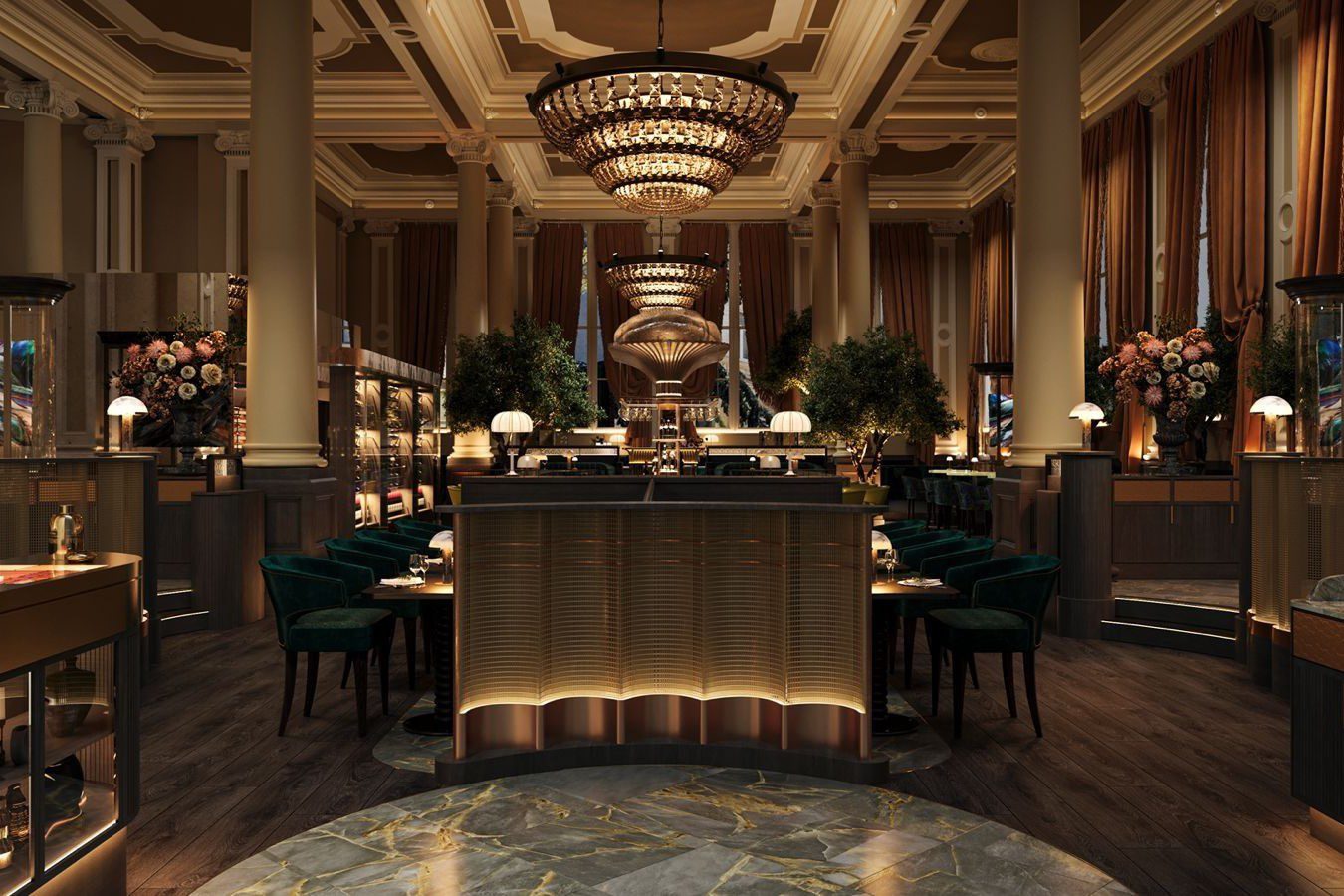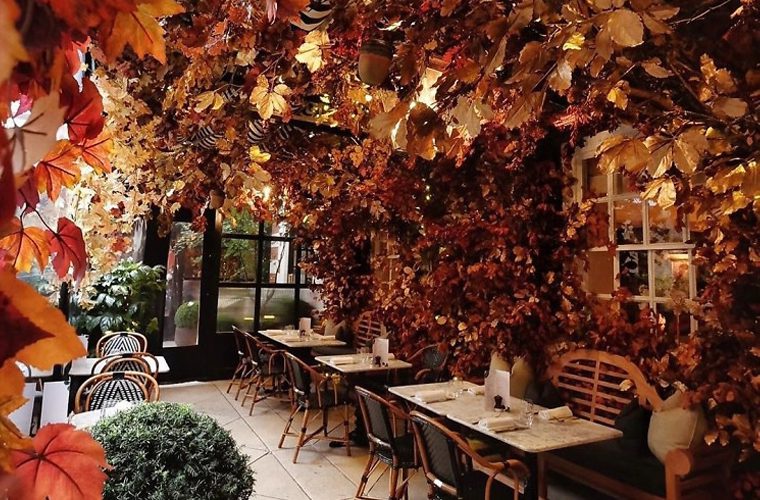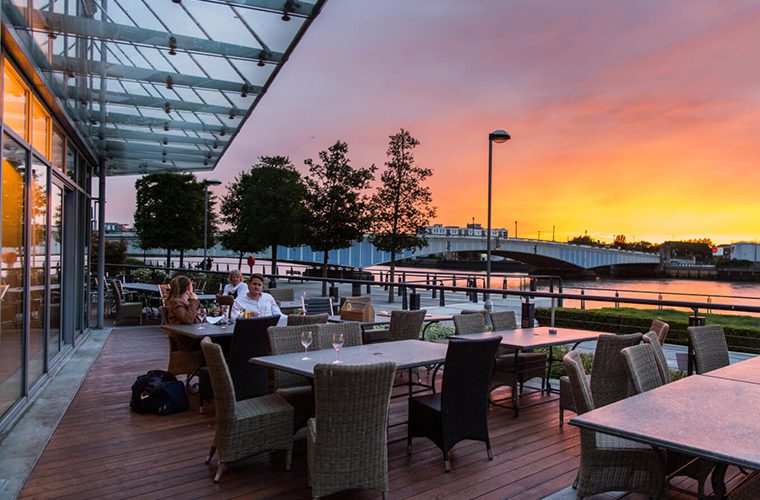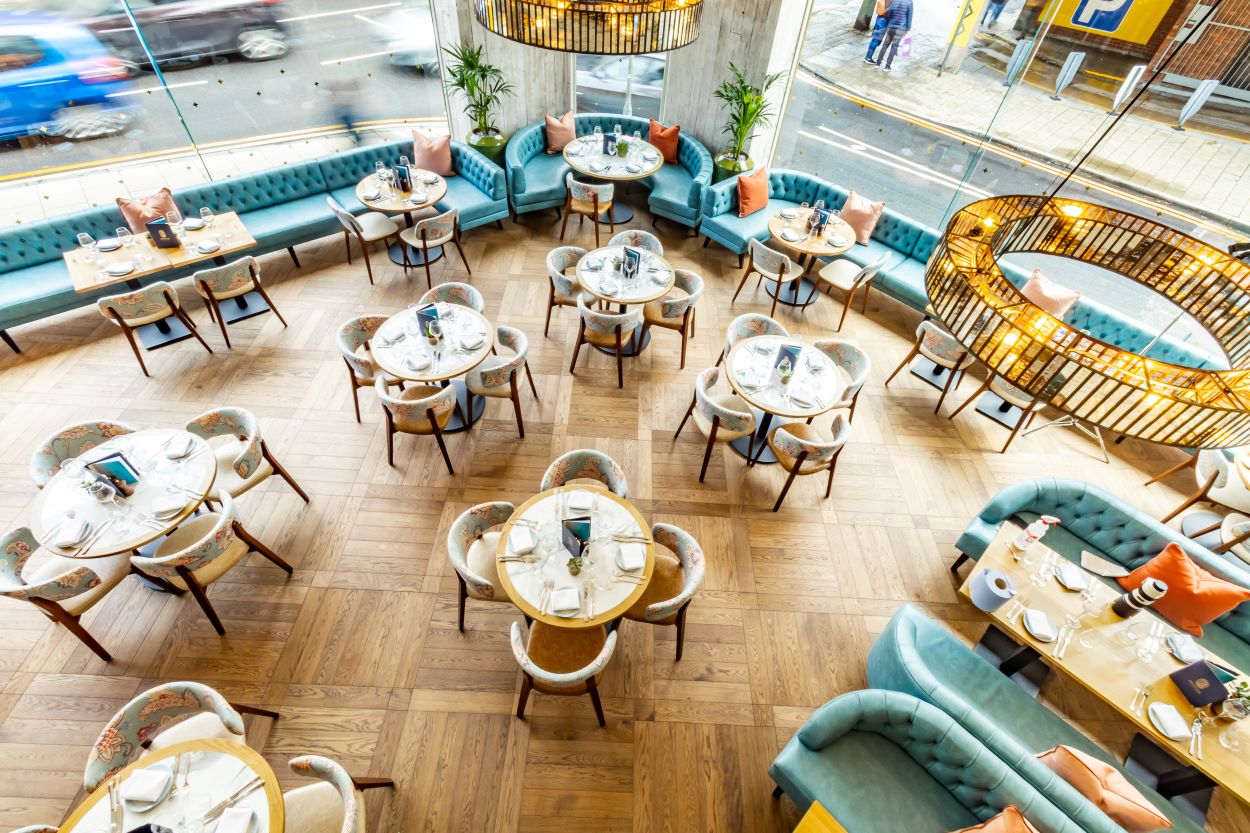
The interior design of a restaurant goes beyond aesthetics; it shapes the dining experience and influences how long customers are likely to stay. This, in turn, affects profitability by creating a welcoming atmosphere that encourages guests to stay longer. A thoughtfully designed space speaks volumes about the quality of a venue, positioning it as a desirable place to spend time and money. Attractive, well-thought-out furniture can ensure a restaurant remains a relevant and enjoyable destination for customers of all ages.
This guide explores what restaurant interior furniture is and offers insights into choices that can enhance both style and functionality based on upcoming trends.
Sustainable materials
In recent years, sustainability has become a priority for both businesses and consumers, particularly in the restaurant industry. Using eco-friendly, sustainable materials for commercial furniture is an effective way for restaurants to demonstrate their commitment to the environment while appealing to environmentally conscious customers. This approach to design includes furniture made from reclaimed wood, bamboo and recycled metals, which not only help to minimise their environmental impact but also offer durability and style that can withstand the demands of high-traffic dining spaces.
Restaurant chairs crafted from reclaimed wood not only bring a unique aesthetic but also contribute to a sustainable operation, as each piece carries its own character and history. These chairs add warmth and personality to a space, making them ideal for creating a welcoming atmosphere. Bamboo is another excellent option; it grows quickly and has the strength required for commercial furniture, providing a practical and eco-friendly alternative to traditional hardwoods. Bamboo restaurant chairs and tables can bring a fresh, natural look to a dining area, appealing to guests who appreciate sustainable choices.
In addition to wood and bamboo, recycled metal furniture can bring an industrial edge to the dining space, adding a modern feel that complements urban restaurant settings.
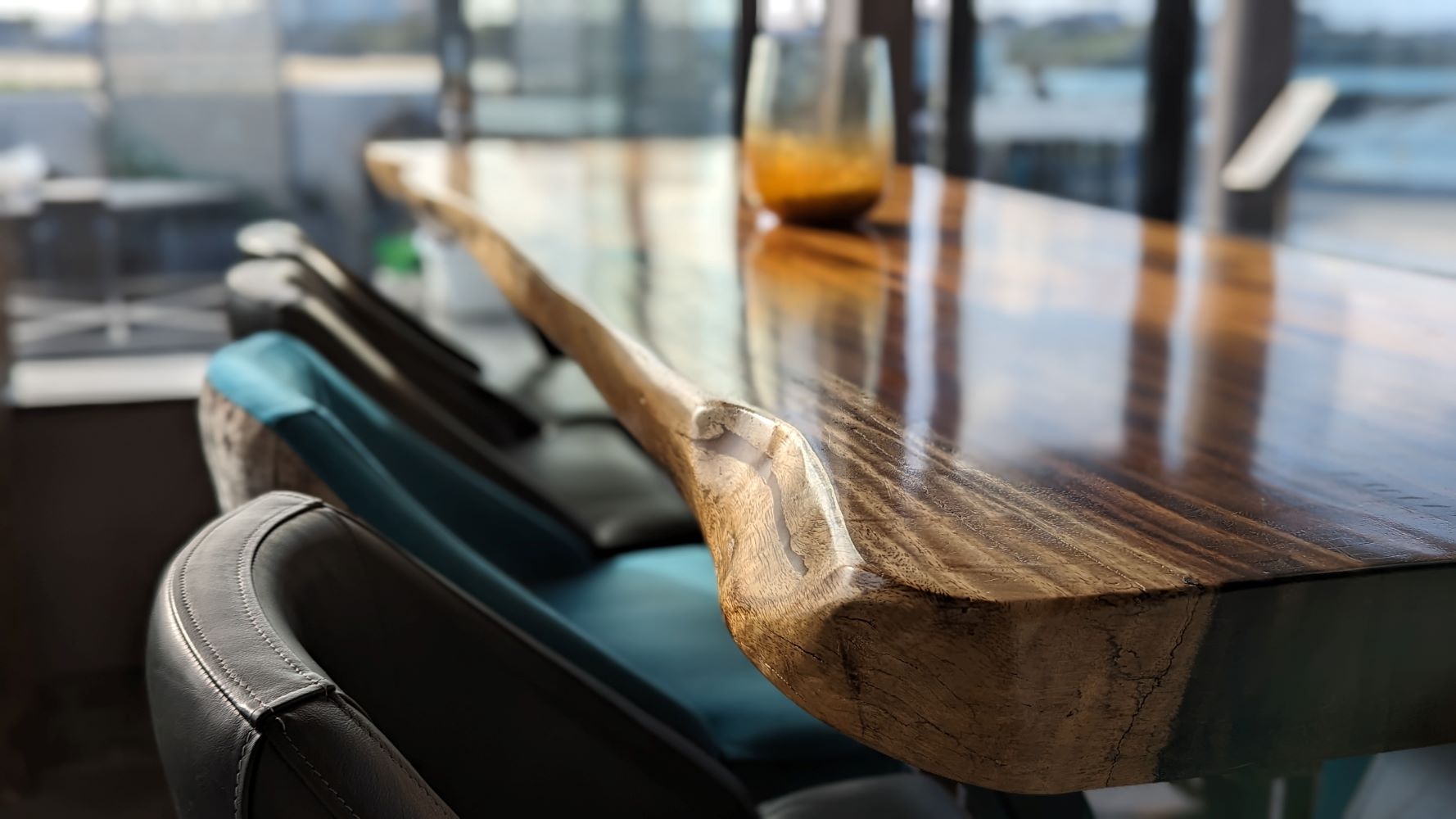
Comfort-focused seating
Comfort is a primary consideration for restaurant seating, as it directly influences how long customers choose to stay and enjoy their meal. Comfort-focused seating includes upholstered chairs, cushioned benches and armchairs that provide both support and relaxation.
By investing in ergonomic designs that accommodate diverse body types, restaurant owners can create a welcoming atmosphere where guests feel encouraged to linger. This type of seating is especially effective in casual dining settings or lounges, where the objective is to foster an environment where patrons feel at ease. The use of soft fabrics, plush cushions and supportive backs helps to enhance the overall dining experience, allowing customers to focus on their meal and company without distraction.
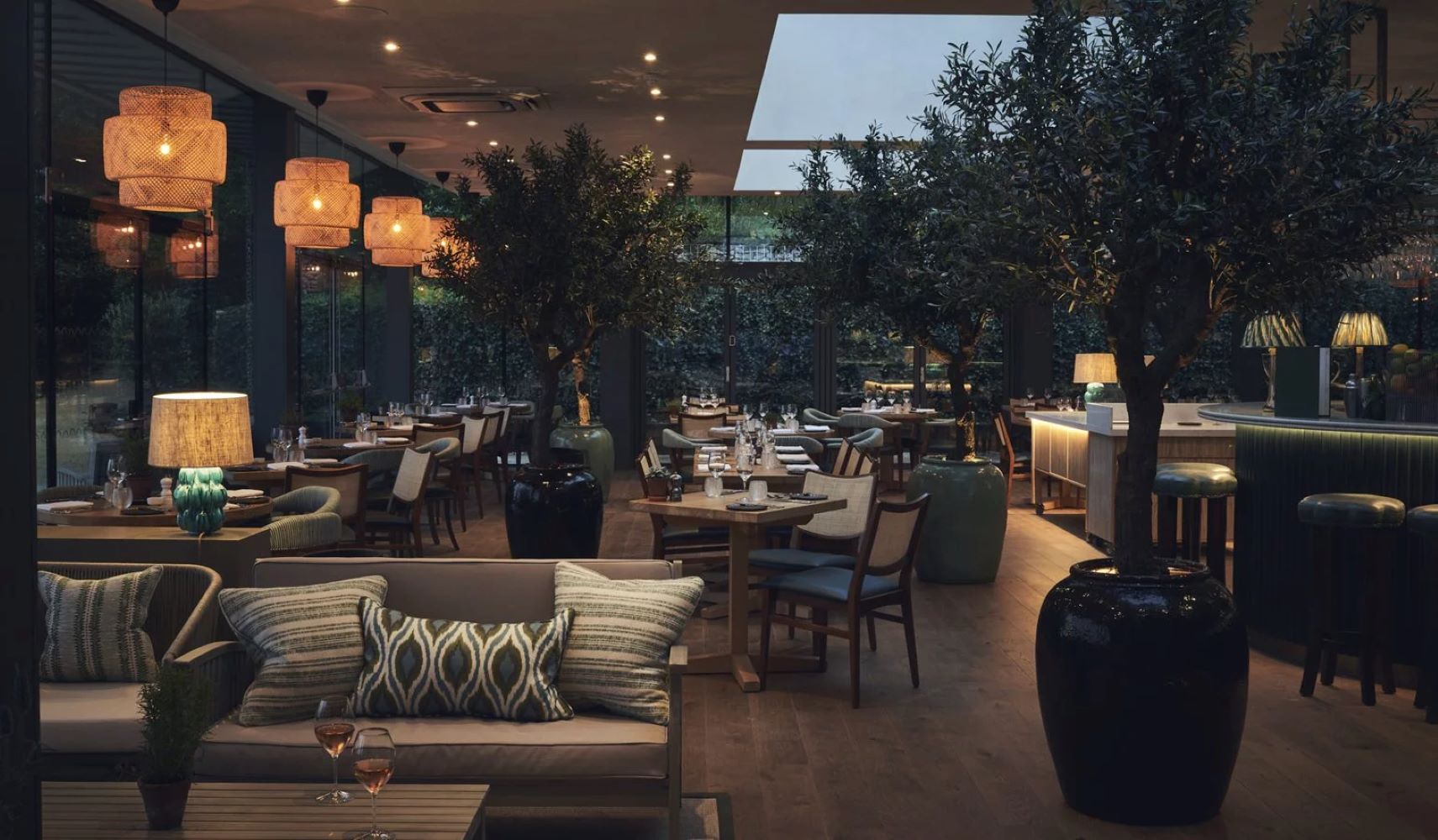
Bold colours and patterns
Incorporating bold colours and patterns into restaurant furniture is an effective way to create a visually stimulating environment that sets a venue apart. By using vibrant hues and eye-catching designs on chairs, tables and even wall décor, restaurants can establish a distinctive atmosphere that leaves a lasting impression on guests. Bold colours such as deep reds, navy blues or even vivid yellows can evoke energy and excitement, making them suitable for lively, social environments.
Patterns, whether on upholstery or wall treatments, add depth and character, contributing to an engaging and memorable dining experience. When used thoughtfully, bold colours and patterns can complement a restaurant’s theme and bring its personality to life.

Booth seating
Booth seating offers a sense of intimacy and privacy, making it a popular choice for both casual and upscale dining establishments. By enclosing the seating area, booths create a comfortable, semi-private space that enhances the dining experience, particularly for groups. This seating style often features plush upholstery and high backs, which help to reduce noise and provide a cosy atmosphere. Booths are also versatile, as they can be designed to fit a variety of layouts and accommodate different group sizes.
The enclosed nature of booth seating fosters a relaxed environment where guests can focus on their meal and conversation, making it a valuable addition to any restaurant looking to offer a more personal dining experience.
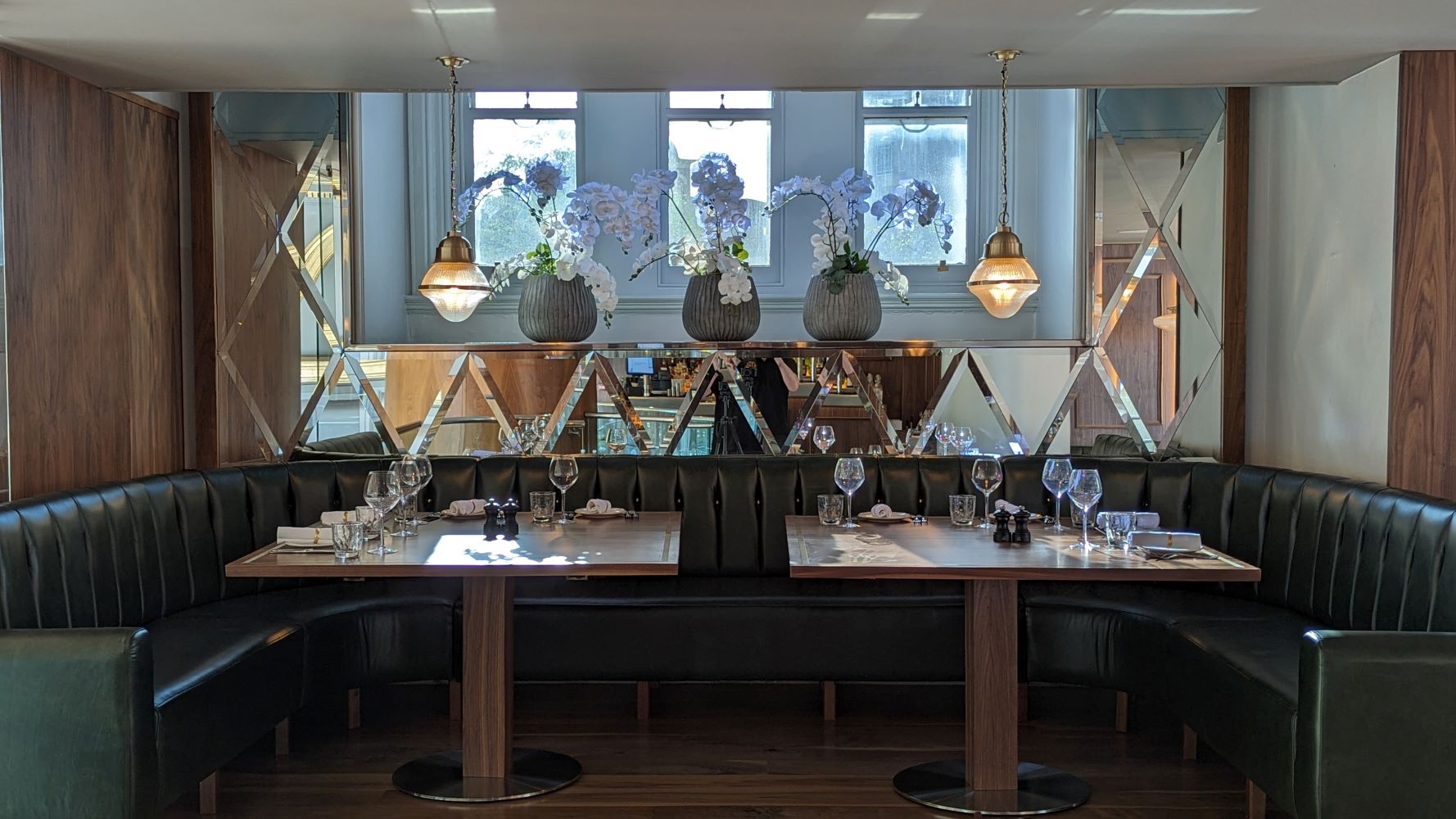
Flexibility with tables of two and fours
Flexibility is important for any dining space, and offering tables of two and fours that can be easily rearranged provides a practical solution for accommodating various party sizes. This approach is particularly advantageous during peak hours when customer flow can fluctuate, or when larger groups arrive unexpectedly. By selecting adaptable hospitality furniture, including tables that can be combined seamlessly, restaurants can quickly adjust their seating arrangements without compromising layout or customer comfort.
In addition to tables, other hospitality furniture like bar stools and side chairs can enhance this flexible setup. Bar stools, placed around high tables or at the bar, provide extra seating that can be easily moved as needed. Similarly, side chairs that are lightweight and stackable allow for quick reconfiguration, enabling the restaurant to make the most of its space. Table tops designed for easy rearrangement further support this adaptable approach, allowing staff to join tables together to form larger surfaces or separate them as necessary. This dynamic use of space helps restaurants to maximise capacity and maintain an organised, comfortable environment that caters to the needs of all guests, regardless of group size.
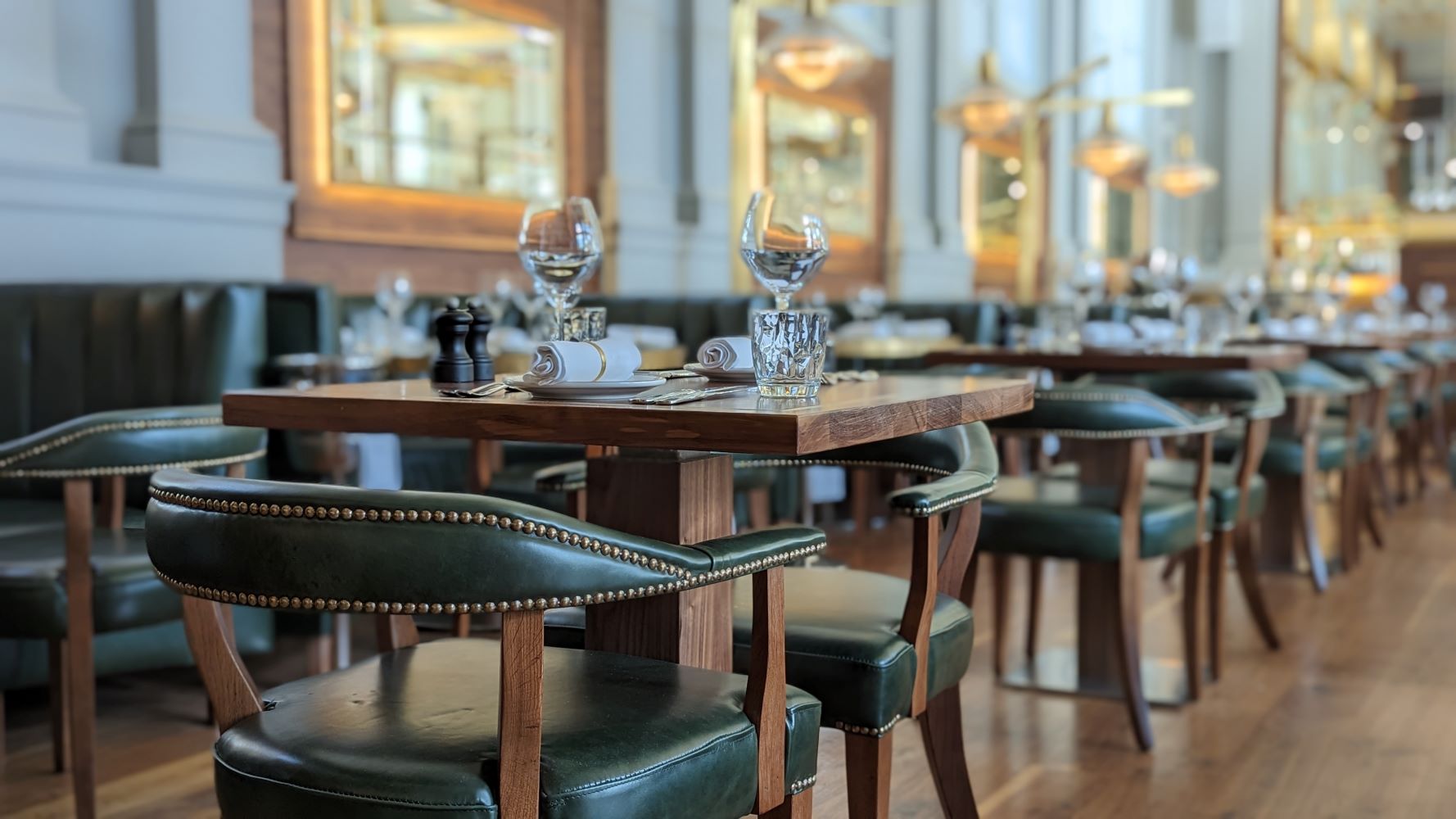
Timber and laminated table tops
Timber and laminated table tops are practical and versatile choices for restaurant interiors, offering a combination of durability and style that suits various dining environments. Timber tops bring natural warmth and authenticity to the dining space, with a variety of wood finishes available to match different themes and aesthetics. These table tops, made from oak, walnut or pine, can enhance a rustic, industrial or contemporary setting, creating a timeless appeal that complements diverse design concepts. Timber is also resilient and ages gracefully, making it a solid long-term investment for high-traffic areas.
Meanwhile, laminated table tops provide a cost-effective alternative that mimics the appearance of natural wood while offering added resistance to spills, scratches, and heat. These table tops are easy to clean and maintain, making them ideal for busy restaurants that require durable surfaces that still look sophisticated. Laminated tops come in a range of styles and colours, allowing restaurant owners to achieve the desired aesthetic without sacrificing practicality. Whether used in casual dining spots or upscale eateries, timber and laminated table tops can be tailored to fit the space, offering a blend of form and function that appeals to both customers and staff.
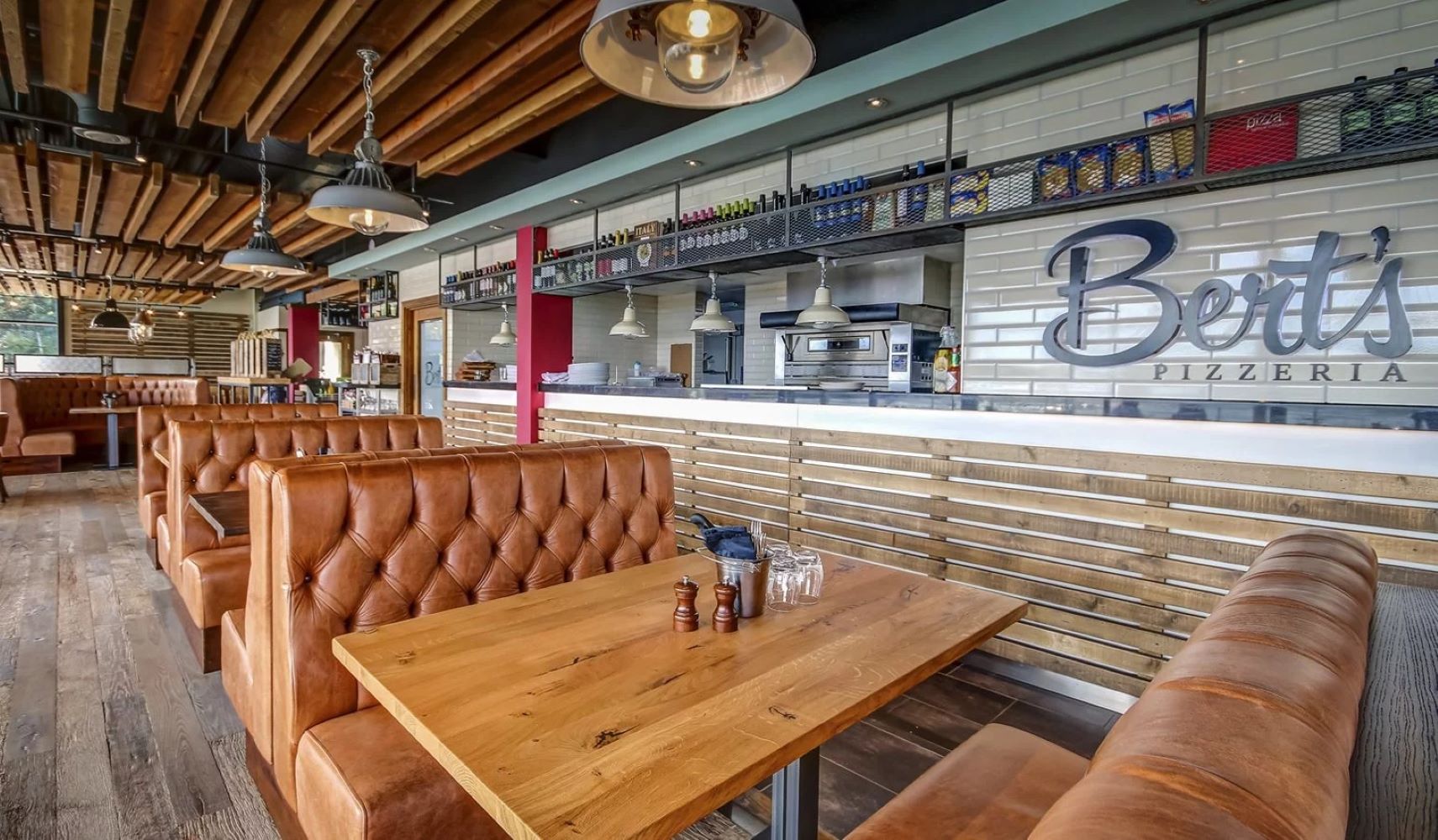
How can a restaurant interior furniture specialist help?
A restaurant interior specialist such as Dawnvale brings expertise in implementing furniture that goes beyond aesthetics, blending functionality with style to create a space that enhances the customer experience. We can optimise the furniture layout to support efficient staff movement, ensuring a smooth flow from the kitchen to the dining area. We have a keen understanding of furniture and materials, so we can provide pieces that are both durable and visually appealing, matching your venue's branding and theme. Moreover, we can incorporate elements that manage acoustics, regulate lighting, and define seating arrangements to craft an atmosphere that aligns with the restaurant’s goals.
Contact us today, let's discuss your goals for your restaurant interior and its furniture and let us bring your vision to life. Call us on 0161 684 7879 or use our contact form, and we’ll get back to you as soon as possible.

